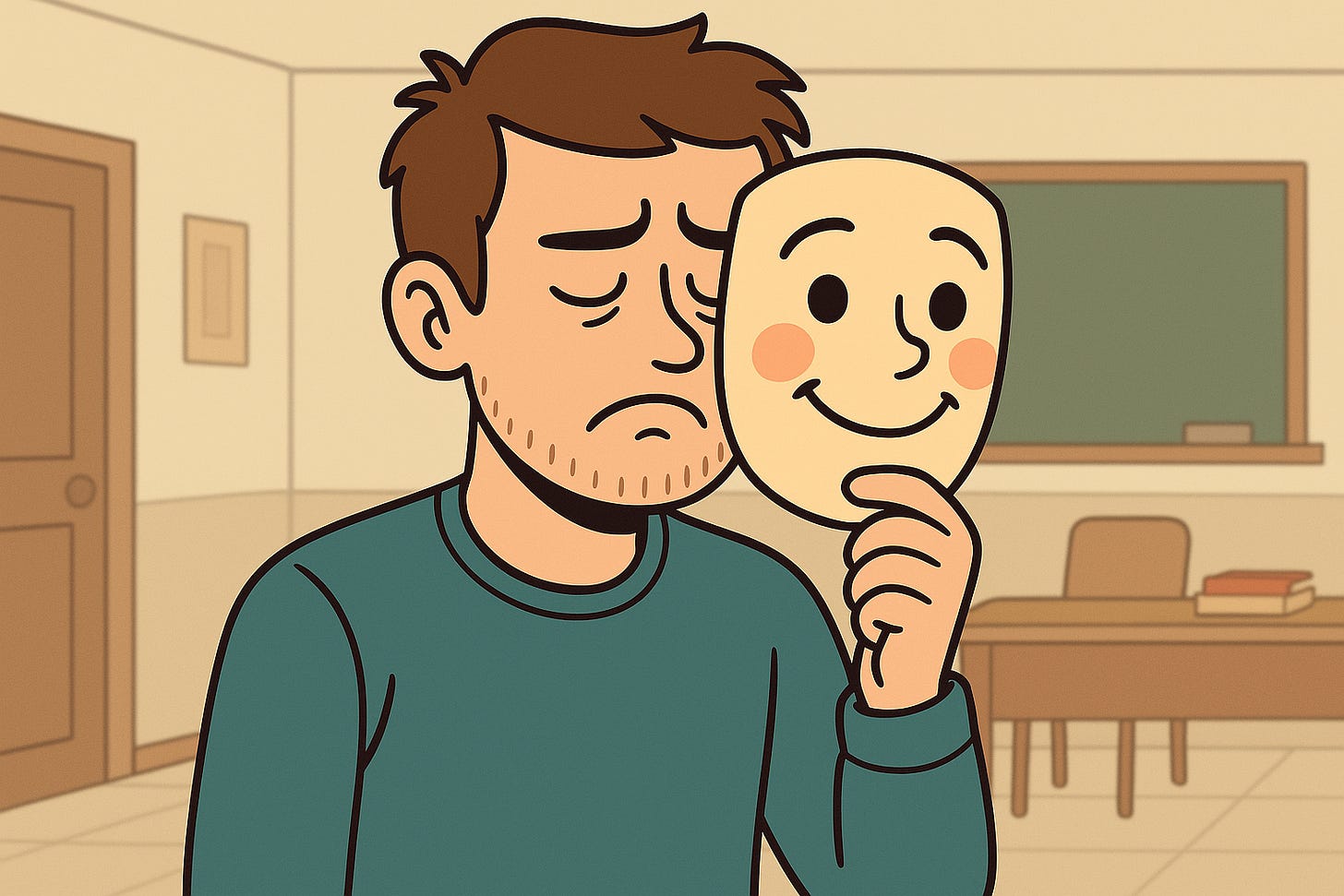There's a particular exhaustion that comes from constantly translating yourself for the world. If you have ADHD, you likely know this intimately – the perpetual performance of "normal" that leaves you depleted, disconnected, and wondering who you actually are beneath all the adaptations.
Masking isn't just hiding your ADHD traits. It's the complex, often unconscious process of suppressing your natural responses, mimicking neurotypical behaviour patterns, and maintaining a facade that helps you navigate social, professional, and educational spaces that weren't designed for minds like ours. It's sitting on your hands to stop fidgeting, forcing eye contact that feels invasive, laughing at jokes a beat after everyone else while you're still processing, and saying "sorry" for existing in ways that feel too loud, too much, too different.
What I've been discovering is that DBT offers a framework for navigating this exhausting dance – not by getting better at masking, but by finding ways to be authentically and effectively yourself in a world that often demands conformity.
The Anatomy of Masking: What We're Really Doing
Before we explore DBT's offerings, let's map what masking actually involves for ADHD minds:
Cognitive Masking
Hiding processing delays by nodding along when confused
Pretending to remember details you've forgotten
Concealing the effort required for "simple" tasks
Suppressing the urge to info-dump about special interests
Forcing linear conversation when your thoughts are webbed
Emotional Masking
Dampening enthusiasm to appear "professional"
Hiding overwhelm to seem "capable"
Suppressing frustration when understimulated
Concealing rejection sensitivity
Performing neurotypical emotional responses
Physical Masking
Suppressing stims and fidgets
Forcing stillness when your body needs movement
Maintaining eye contact that feels overwhelming
Controlling vocal volume and pace
Managing facial expressions to match social expectations
Social Masking
Following conversation rules that feel arbitrary
Performing small talk when you crave depth
Hiding social confusion with scripted responses
Suppressing the urge to interrupt
Maintaining social energy when depleted
Each of these acts requires enormous cognitive and emotional resources. We're essentially running complex software (masking protocols) on top of our operating system (ADHD brain), and wondering why we're always exhausted.
The Cost We Don't Talk About
Masking comes with a price that compounds over time:


